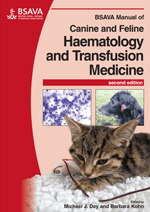
Full text loading...

Haemophilia A and B are hereditary, X-linked bleeding disorders caused, respectively, by deficiencies of coagulation factors FVIII and FIX. Haemophilia is among the most common hereditary human disorders; both haemophilia A and B have been identified in domestic animals and, as in humans, haemophilia A is the most common form. This chapter considers function of factors VIII and IX; prevalence and inheritance of haemophilia; clinical signs; diagnosis; management of haemophilia; genetic counselling.
Haemophilia A and B, Page 1 of 1
< Previous page | Next page > /docserver/preview/fulltext/10.22233/9781905319732/9781905319732.28-1.gif

Full text loading...




